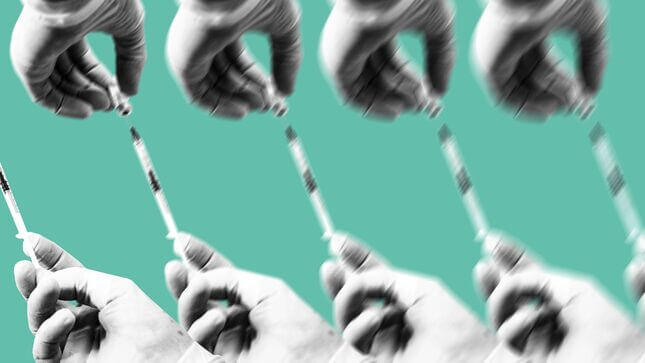There Is No After
Latest
Graphic: Elena Scotti (Photos: Getty Images)
Shortly before Christmas last year, I sent a message to Jeff Sharlet, a writer I don’t know, thanking him for memorializing the dead. It was a Sunday night, past 2 a.m., and though I can’t remember the specific thing keeping me awake I know its basic contours. Most every feeling I’ve had this year is a shifting arrangement of terrible, grasping dread and raw disbelief. (And fury, of which I have oceans.) He got back to me shortly before 4 a.m.; he was on the “late shift,” he said, working on a story about what was at that time the comparatively paltry 317,816 Americans who had died of covid-19.
Through much of the pandemic Sharlet posted frequently on Twitter about those people. He published their photographs, their nicknames, retweeted family members as they grieved. I found small tributes like his oddly comforting, a fleeting alignment between the infinite scroll and the reality outside—a counterpoint to the horrible numbness of watching staggering numbers run down my screen at every hour of every day.
“Better timing than you know,” Sharlet wrote to me in reply when I told him unsolicited in the middle of the night how much I appreciated those posts. “Shortly before your message someone tweeted at me that they tune me out … they don’t want to think about all the dead at the end of the day.” Declining to engage with tragedy is an understandable impulse, and one that will probably become more common in the coming months. The alleged end of the pandemic is on the horizon. Who would want to involuntarily continue to relive the most heartbreaking of possible years?
The alleged end of the pandemic is on the horizon. Who would want to involuntarily continue to relive the most heartbreaking of possible years?
For his story, published in Esquire this March on the loose anniversary of the pandemic’s spread across the U.S., Sharlet spoke to those left behind when nine people contracted the no-longer-novel coronavirus and did not survive. In a year that made a statistician out of everybody I did an involuntary calculation, figuring the profiles accounted for a little more than .00001% of the people we’ve lost as of this week. “It’s as if there has been a rapture,” Sharlet noted in the piece. But those who are left behind are so stunned, he wrote, we “speak not of those who died gasping or those who live now with scar-laced lungs” but of the “smaller losses”—a coffee with a new acquaintance, a cold beer in a near-empty bar, a pool party. The deficit of what Maria Bustillos, writing shortly after the death of her mother, called “the incalculable”: “All the time we didn’t get to be together, if you were to add it up.”
-

-

-

-

-

-

-

-

-

-

-

-

-

-

-

-

-

-

-

-

-

-

-

-

-

-

-

-

-

-

-

-

-

-

-

-

-

-

-

-








































